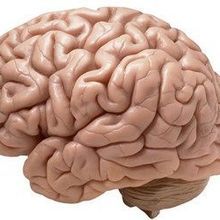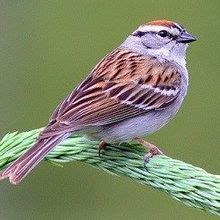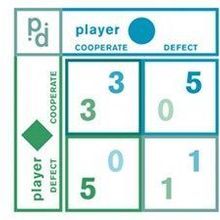cooperation

Infographic: Curbing the Cheaters
Mariella Bodemeier Loayza Careaga, PhD | Jun 1, 2023 | 1 min read
From spatial structuring to policing, cooperative bacteria have a wide toolkit to contain the spread of cheaters.

Inside Versus Out: A New Form of Bacterial Cooperation
Natalia Mesa, PhD | Jul 20, 2022 | 5 min read
Oceanic bacteria form a transient spherical community to conquer large food sources, taking on different roles to break down the bounty more efficiently.

Image of the Day: Wolves Playing Fetch
Amy Schleunes | Jan 17, 2020 | 2 min read
A new study shows wolf pups responding to vocal encouragement from humans.

What Made Human Brains So Big?
Ashley Yeager | May 24, 2018 | 2 min read
Ecological challenges such as finding food and creating fire may have led the organ to become abnormally large, a new computer model suggests.

Image of the Day: Trade Deals
The Scientist | Jan 24, 2017 | 1 min read
The forces of supply and demand appear influence paper wasp (Polistes dominula) populations. When more nest options are available, helper wasps work fewer hours to earn membership in a colony.

On Becoming Human
Mary Beth Aberlin | Aug 1, 2016 | 3 min read
Some thoughts on going to the Galápagos

Opinion: Monogamy and Cooperation Are Connected Through Multiple Links
David F. Westneat and Jacqueline R. Dillard | Aug 1, 2016 | 4 min read
Why does cooperation evolve most often in monogamous animals?

Multicellular Cooperation Curbs Cheating
Jenny Rood | Jul 1, 2016 | 2 min read
An experimental evolution study shows that more cheaters arise when bread mold fungal cells are less related to one another.

Behavior Brief
Catherine Offord | Mar 24, 2016 | 4 min read
A round-up of recent discoveries in behavior research

All Together Now
Mary Beth Aberlin | Jan 1, 2016 | 3 min read
Understanding the biological roots of cooperation might help resolve some of the biggest scientific challenges we face.

Contributors
Karen Zusi | Jan 1, 2016 | 3 min read
Meet some of the people featured in the January 2016 issue of The Scientist.

Inventing Teamwork
The Scientist | Dec 31, 2015 | 1 min read
What can social networks among hunter-gatherers in Tanzania teach us about how cooperation evolved in human populations?

Maintaining Cooperation
R. Ford Denison and Katherine Muller | Dec 31, 2015 | 2 min read
How organisms keep their biological partners from cheating

Behavior Brief
Rina Shaikh-Lesko | Feb 27, 2014 | 4 min read
A round-up of recent discoveries in behavior research

A Twist in Evolutionary Game Theory
Kate Yandell | Aug 5, 2013 | 2 min read
Biologists demonstrate the instability of employing a selfish strategy in the prisoner’s dilemma game.

The Upside of Suicide
Sabrina Richards | Mar 20, 2013 | 3 min read
Researchers show that a bacterium’s self-sacrifice can benefit its community, even when the members are not strongly related.

La Bohème: A Portrait of Our Oceans in Peril
Graciela Flores | Mar 15, 2013 | 1 min read
The sculptures of Mara G. Haseltine's new exhibition tell a tale of beautiful oceans ravaged by pollution.

Love Song for an Ailing Planet
Graciela Flores | Mar 15, 2013 | 3 min read
Artist Mara G. Haseltine unveils her latest exhibition of science-inspired sculpture, a melancholy ode to marine plankton set to the music of Puccini.

Opinion: Cooperating to Study Cooperation
David Smith | Feb 20, 2013 | 3 min read
Physicists and biologists are working together to understand cooperation at all levels of life, from the cohesion of molecules to interspecies interactions.
